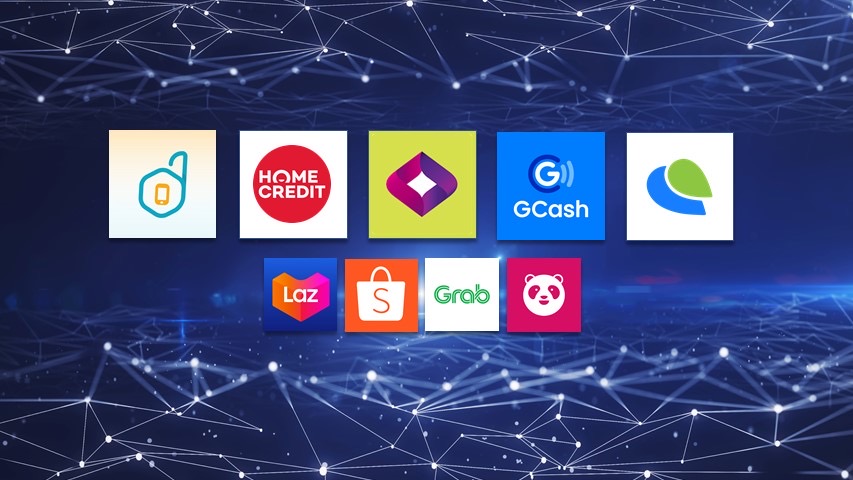2020 saw significant changes to the way we live, work and play. As people stayed in the safety of their homes for weeks and months on end, we needed to alter our daily routines and use technology more than ever. From Zoom meetings and food deliveries to online shopping and Netflix bingeing—and occasionally, doing all these things at the same time—our smartphones, laptops, and the almighty internet have become absolute musts in the new normal.
So it comes as no surprise that technology has also become indispensable in helping us buy, finance or otherwise acquire all the delicious food, irresistible shopping deals, and other wonderful things and everyday necessities that have kept us alive and well in 2020. Now more than ever, people need fast, safe and secure ways to make payments, send or receive money from loved ones, and apply for loans or other financial tools—especially those who are using these tools for the very first time under extraordinary circumstances.
A number of fintech apps delivered the goods for us in 2020 and continue to do so as we usher in the new year. Here are the fintech apps that blew our minds:

RCBC/DiskarTech: making online banking accessible to the ordinary Filipino
Given that the country qualifies as a sachet economy, it’s no wonder then that an app that aims to provide “satchet banking services to millions of Filipinos” has quickly gained a following among consumers. RCBC’s DiskarTech has become the go-to banking app of choice especially those who are first-timers to fintech and are consumers of the tingi tingi variety. The app, with its Taglish interface and easy to understand features, is especially geared towards MSMEs, as part of RCBC’s goal to include more small businesses into the financial system and help them go digital.
Home Credit: consumer finance goes digital, with HC’s app and QR-enabled credit card
Many people know them for their ever-present sales associates in red shirts in malls and gadget shops, or for being the pioneer of fast and affordable installments of phones and other goods even without a credit card. But Home Credit has since gone digital as well, allowing customers to apply for loans via the My Home Credit app and even do their shopping in-app via the Marketplace feature. And not only is it the first non-bank institution to issue a credit card in the country, it’s also the first credit card to be QR-enabled, which means that Home Credit card holders can simply use their app to scan QR codes instead of swiping their cards to make payments—allowing for a truly cashless, contactless and safe shopping experience. Aside from gadget loans, Home Credit’s eligible customers can also apply for cash loans right inside the app, and once approved, can have their loans disbursed to them almost instantly.
EastWest: online banking from the comfort of your Facebook messenger
While having a multifunctional app is now the norm for most if not all banks, there are those who understand that not everyone might be ready to dive into these apps, or simply don’t have the capacity to install these on their phones. Enter EastWest Bank, whose AI-powered ESTA (short for EastWest System Tech Assistant) chatbot allows customers to perform a wide variety of self-service transactions functions—from checking balances to converting purchases to installments and applying for credit cards—all from your Facebook messenger chat box. ESTA is highly responsive and is a great tool for banking customers who are FB-savvy, but not quite ready to call themselves techies—or simply find ESTA a lot more convenient to access.
GCash and PayMaya: taking e-wallets to greater heights in the new normal
The once niche segment of e-wallets and online payments went full-on mainstream in 2020 as more and more consumers opted to go digital in sending money and paying bills, as well as use these services for online shopping and food deliveries. GCash and PayMaya have already made a big name for themselves even prior to the new normal, as more Filipinos began to discover the joys of cashless transactions and fast and simple money transfers. But as 2020 rolled along, now everybody from your suking sari-sari store owner to your favorite online seller to your dear old Lola probably has a GCash or PayMaya account. Anyone else receive any virtual ampaos last Christmas?
Lazada and Shopee, Grab and Foodpanda: forever changing the way Pinoys shop and dine
Okay, so they aren’t necessarily purely fintech apps per se (though Grab has branched out into that space with their own e-wallet), and they might not have “helped” our wallets so much as made our wallets lighter (thanks to 11/11, 12/12 and all those sales in between). But can you imagine going through months of lockdown without being able to snag a flash sale deal from Lazada or Shopee, or order your favorite cheat day meal via GrabFood or Foodpanda? These shopping platforms helped to drive demand and usage of the above fintech apps plus countless others. And together with these apps, they helped to define a year that was unlike any other.
All these digital tools have become integral parts of our lives—not just in 2020, but in years to come. Here’s to more tech apps and more digitized Filipinos in 2021!




